-
 Bitcoin
Bitcoin $88,575.4133
1.33% -
 Ethereum
Ethereum $1,623.1195
-0.94% -
 Tether USDt
Tether USDt $1.0000
0.01% -
 XRP
XRP $2.1040
-0.96% -
 BNB
BNB $605.9509
0.36% -
 Solana
Solana $139.9862
-0.01% -
 USDC
USDC $1.0000
0.00% -
 Dogecoin
Dogecoin $0.1637
1.09% -
 TRON
TRON $0.2482
1.98% -
 Cardano
Cardano $0.6392
-1.18% -
 Chainlink
Chainlink $13.3059
-1.43% -
 UNUS SED LEO
UNUS SED LEO $9.0739
-4.00% -
 Avalanche
Avalanche $20.1274
-2.31% -
 Stellar
Stellar $0.2484
-4.08% -
 Sui
Sui $2.3116
2.05% -
 Shiba Inu
Shiba Inu $0.0...01252
-0.73% -
 Toncoin
Toncoin $2.9119
-3.20% -
 Hedera
Hedera $0.1725
0.04% -
 Bitcoin Cash
Bitcoin Cash $346.0750
1.19% -
 Hyperliquid
Hyperliquid $18.2428
0.88% -
 Litecoin
Litecoin $79.3117
-2.01% -
 Polkadot
Polkadot $3.7471
-4.36% -
 Dai
Dai $1.0000
0.00% -
 Bitget Token
Bitget Token $4.4341
-0.56% -
 Ethena USDe
Ethena USDe $0.9992
0.00% -
 Pi
Pi $0.6353
0.33% -
 Monero
Monero $216.8188
0.48% -
 Pepe
Pepe $0.0...08105
3.48% -
 Uniswap
Uniswap $5.3764
-1.05% -
 OKB
OKB $51.0901
0.18%
What is the holding structure of Bitcoin ETFs?
Bitcoin ETFs avoid direct Bitcoin ownership due to complexities, instead using futures contracts, investments in mining companies, or trust structures to gain exposure, with each method presenting unique risks and varying transparency levels.
Feb 26, 2025 at 07:42 pm
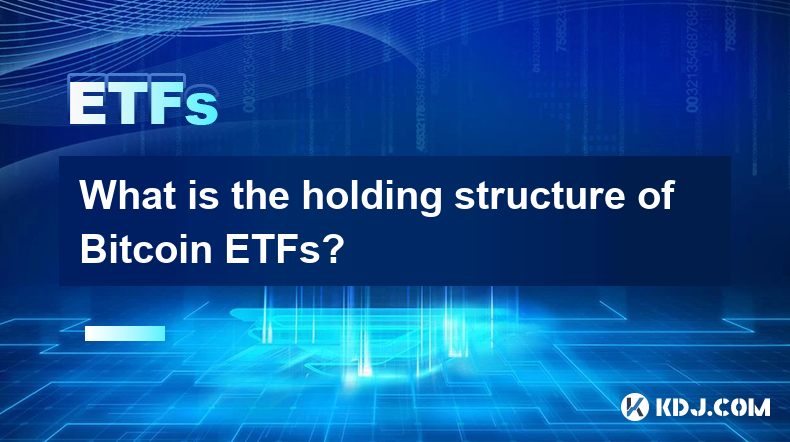
What is the Holding Structure of Bitcoin ETFs?
Key Points:
- Bitcoin ETFs, unlike traditional ETFs, hold Bitcoin indirectly through various mechanisms. Direct ownership of Bitcoin is often impractical due to regulatory hurdles and operational complexities.
- The precise holding structure varies significantly depending on the ETF's investment strategy, the jurisdiction it operates under, and the custodian it employs.
- Common methods involve holding Bitcoin indirectly through physically-settled Bitcoin futures contracts, shares of publicly traded companies with significant Bitcoin holdings, or through trust structures that hold the underlying Bitcoin.
- Transparency and security of the holding structure are crucial considerations for investors, demanding careful scrutiny of the ETF's prospectus and associated documentation.
- Regulatory frameworks significantly influence the permitted holding structures, leading to variations between ETFs domiciled in different countries.
Understanding Bitcoin ETF Holding Structures: A Detailed Exploration
The holding structure of a Bitcoin ETF is a critical aspect to understand before investing. Unlike traditional ETFs that invest in readily tradable stocks or bonds, Bitcoin ETFs face unique challenges due to the inherent nature of Bitcoin as a decentralized digital asset. Direct ownership of Bitcoin by the ETF itself presents numerous operational and regulatory complexities. Therefore, most Bitcoin ETFs utilize indirect holding structures, each with its own set of advantages and disadvantages. Let's delve into the intricacies of these structures.
- Holding Bitcoin through Futures Contracts:
Many Bitcoin ETFs choose to gain exposure to Bitcoin's price movements by investing in Bitcoin futures contracts. These contracts obligate the buyer to purchase a specified amount of Bitcoin at a predetermined price on a future date. This approach avoids the direct custody of Bitcoin, simplifying regulatory compliance and operational management. However, it introduces counterparty risk—the risk that the entity selling the futures contract might default. The ETF's success is tied to the reliability of the counterparties, and the price movements of the futures contracts may not perfectly mirror the spot price of Bitcoin. Furthermore, rolling over futures contracts (as contracts have expiration dates) introduces costs and potential tracking error. The process of rolling over involves selling expiring contracts and simultaneously buying new contracts with later expiration dates. This rolling process can be complex and introduces potential for slippage or transaction costs, impacting the ETF's performance relative to the underlying Bitcoin price. Additionally, the choice of the exchange where the futures contracts are traded will impact the liquidity and potential price discrepancies compared to other exchanges. This aspect of the holding structure necessitates a careful analysis of the exchange chosen by the ETF and its implications for tracking error and overall performance. Finally, regulatory scrutiny of futures markets and potential changes in regulatory landscape can influence the efficacy and viability of this approach to Bitcoin ETF holdings.
- Investing in Bitcoin Mining Companies:
Some Bitcoin ETFs indirectly invest in Bitcoin through publicly traded companies engaged in Bitcoin mining. This strategy provides exposure to the Bitcoin ecosystem without directly holding the cryptocurrency itself. The performance of such an ETF would be tied to the success of the mining companies it invests in, which is influenced by factors such as energy costs, mining difficulty, and regulatory environment. This approach introduces several layers of risk. Firstly, the ETF’s returns are dependent not only on the price of Bitcoin but also on the operational efficiency and profitability of the selected mining companies. Secondly, the correlation between the price of Bitcoin and the performance of mining companies isn't always perfect. Mining companies can experience financial difficulties even when the price of Bitcoin is rising. Thirdly, the selection of mining companies held within the ETF is crucial and determines the level of exposure to this specific sector. A poorly diversified portfolio of mining companies could significantly impact the ETF’s overall performance and resilience to market fluctuations. Finally, there's a lack of direct exposure to the price movements of Bitcoin, resulting in potentially lower returns compared to ETFs that track the Bitcoin price more closely.
- Holding Bitcoin through Trust Structures:
Another method involves holding Bitcoin through a trust structure. This structure often involves a qualified custodian that holds the Bitcoin on behalf of the ETF. The trust acts as an intermediary, ensuring the secure storage and management of the Bitcoin. This approach aims to offer greater transparency compared to futures-based ETFs, as the underlying Bitcoin holdings are more readily verifiable. However, the level of transparency still depends on the specific structure of the trust and the reporting requirements it adheres to. Furthermore, the security of the Bitcoin held in the trust remains a critical concern. The ETF's prospectus should clearly outline the security measures employed by the custodian, including insurance policies, cybersecurity protocols, and other safeguards against theft or loss. The regulatory environment governing the trust structure itself is also important, as regulatory changes could impact the ETF's operations and its ability to hold Bitcoin securely. The fees associated with managing the trust and the custodian's services will also directly impact the ETF’s overall expenses and therefore the returns for investors.
- Grayscale Bitcoin Trust (GBTC) as a Precedent:
While not technically an ETF, the Grayscale Bitcoin Trust serves as a relevant example of a structure holding Bitcoin. It's important to note that GBTC is not an ETF and trades at a significant discount to the Net Asset Value (NAV) of its Bitcoin holdings, highlighting the differences and challenges in establishing a truly efficient Bitcoin ETF. The GBTC structure and its historical performance illustrate the complexities involved in creating and managing a large-scale Bitcoin holding structure and the impact of market dynamics on the valuation of such holdings. Analyzing GBTC’s structure and performance can provide valuable insights into the challenges and opportunities inherent in building a successful Bitcoin ETF.
FAQs:
Q: What are the risks associated with Bitcoin ETF investments?
A: Risks include price volatility of Bitcoin, regulatory uncertainty, security risks associated with the custodian holding the Bitcoin (or related assets), counterparty risk (especially with futures-based ETFs), and tracking error (the difference between the ETF's performance and the underlying Bitcoin price). The specific risks will vary depending on the ETF's holding structure and investment strategy.
Q: How can I determine the transparency of a Bitcoin ETF's holding structure?
A: Carefully review the ETF's prospectus and any related documents. Look for detailed information about the custodian, the methods used to hold Bitcoin (futures, trust, etc.), and the audit procedures employed to verify the holdings. Transparency varies considerably between ETFs, so a comparative analysis is recommended.
Q: Are all Bitcoin ETFs the same?
A: No. Bitcoin ETFs differ significantly in their investment strategies, holding structures, expense ratios, and regulatory environments. Understanding these differences is crucial for making informed investment decisions. Some may focus solely on Bitcoin, while others might incorporate other cryptocurrencies or related assets.
Q: What is the role of a custodian in a Bitcoin ETF?
A: The custodian is a specialized institution responsible for the secure storage and management of the Bitcoin (or related assets) held by the ETF. They are crucial for ensuring the safety and integrity of the ETF's holdings. The selection of a reputable and secure custodian is critical to mitigate the risk of theft or loss. The custodian's operational procedures and security protocols should be rigorously examined before investing in an ETF.
Q: How do Bitcoin ETF holding structures differ across jurisdictions?
A: Regulatory frameworks differ significantly across jurisdictions. These differences influence the permissible holding structures, the level of regulatory scrutiny, and the overall operational complexities associated with launching and managing a Bitcoin ETF. Some jurisdictions may be more restrictive than others, potentially limiting the choice of holding structures available to ETFs operating within their boundaries. Understanding these jurisdictional variations is crucial for investors to evaluate the risks and potential returns associated with ETFs from different locations.
Disclaimer:info@kdj.com
The information provided is not trading advice. kdj.com does not assume any responsibility for any investments made based on the information provided in this article. Cryptocurrencies are highly volatile and it is highly recommended that you invest with caution after thorough research!
If you believe that the content used on this website infringes your copyright, please contact us immediately (info@kdj.com) and we will delete it promptly.
- AVAX Price Prediction 2025: Will Avalanche Reach New Heights?
- 2025-04-22 17:50:12
- XRP Price Prediction Shows Bullish Momentum After Coinbase Lists Its Futures Contracts
- 2025-04-22 17:50:12
- Bitcoin is surging again, capturing the spotlight in the crypto world.
- 2025-04-22 17:45:12
- Pi Network (PI) Holds Above $0.63: $5 Price Prediction and Whale Accumulation Fuel Optimism
- 2025-04-22 17:45:12
- One of the cryptocurrencies that ranked in the eleventh place, Chainlink, has been in the spotlight as it is traded at $13.12
- 2025-04-22 17:40:12
- Pi Network's Token Structure Promises a Fair Launch
- 2025-04-22 17:40:12
Related knowledge

What is the difference in returns between long-term holding of a Bitcoin ETF and holding Bitcoin directly?
Apr 09,2025 at 04:15am
When considering the difference in returns between long-term holding of a Bitcoin ETF and holding Bitcoin directly, it's essential to understand the nuances and factors that affect each investment option. Both approaches have their unique advantages and potential drawbacks, which can significantly impact the overall returns over time. Understanding Bitc...
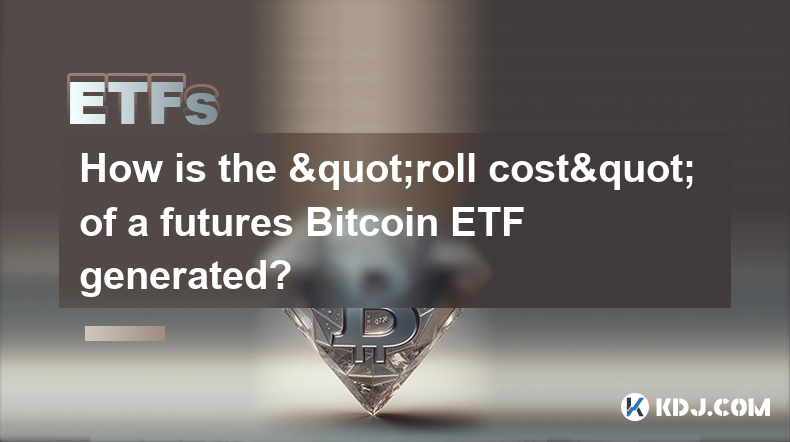
How is the "roll cost" of a futures Bitcoin ETF generated?
Apr 08,2025 at 01:22pm
The 'roll cost' of a futures Bitcoin ETF is a critical concept for investors to understand, as it directly impacts the performance of the ETF. In this article, we will delve into the mechanics of how the roll cost is generated, exploring the underlying processes and factors that contribute to this cost. Understanding Futures ContractsFutures contracts a...
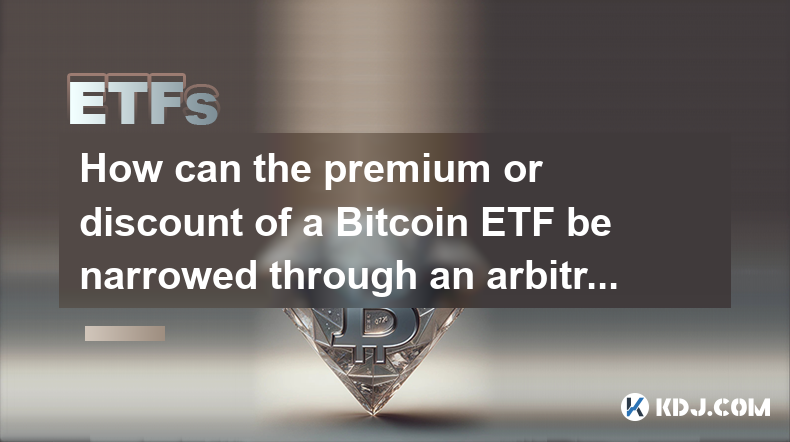
How can the premium or discount of a Bitcoin ETF be narrowed through an arbitrage mechanism?
Apr 09,2025 at 12:07am
Arbitrage mechanisms play a crucial role in narrowing the premium or discount of a Bitcoin Exchange Traded Fund (ETF). Understanding how these mechanisms work can provide valuable insights into the dynamics of Bitcoin ETFs and their relationship with the underlying asset. This article will delve into the specifics of how arbitrage can be used to align t...
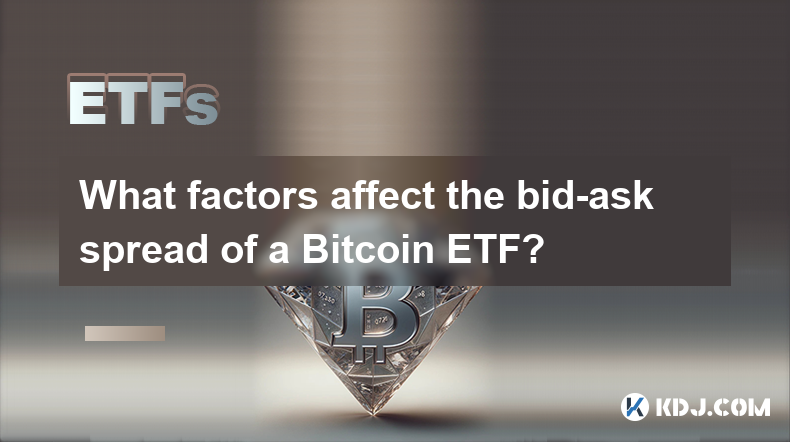
What factors affect the bid-ask spread of a Bitcoin ETF?
Apr 08,2025 at 08:50pm
The bid-ask spread of a Bitcoin Exchange Traded Fund (ETF) is a critical metric that investors and traders closely monitor. It represents the difference between the highest price a buyer is willing to pay (bid) and the lowest price a seller is willing to accept (ask). Several factors influence this spread, and understanding them can help investors make ...
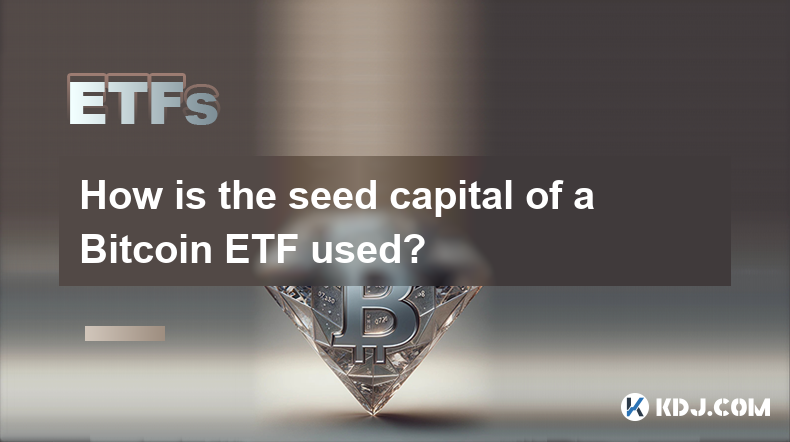
How is the seed capital of a Bitcoin ETF used?
Apr 10,2025 at 02:15pm
The seed capital of a Bitcoin ETF plays a crucial role in the establishment and operation of the fund. This initial investment is used to create the fund's underlying assets, manage operational costs, and ensure the ETF can start trading on an exchange. Understanding how this seed capital is utilized provides insight into the mechanics of Bitcoin ETFs a...

What is the difference between "physically backed" and "synthetic" Bitcoin ETFs in terms of holding assets?
Apr 10,2025 at 04:56pm
Bitcoin Exchange Traded Funds (ETFs) have become a popular way for investors to gain exposure to the cryptocurrency market without directly owning the underlying asset. There are two primary types of Bitcoin ETFs: physically backed and synthetic. Understanding the differences between these two types, particularly in terms of how they hold assets, is cru...

What is the difference in returns between long-term holding of a Bitcoin ETF and holding Bitcoin directly?
Apr 09,2025 at 04:15am
When considering the difference in returns between long-term holding of a Bitcoin ETF and holding Bitcoin directly, it's essential to understand the nuances and factors that affect each investment option. Both approaches have their unique advantages and potential drawbacks, which can significantly impact the overall returns over time. Understanding Bitc...

How is the "roll cost" of a futures Bitcoin ETF generated?
Apr 08,2025 at 01:22pm
The 'roll cost' of a futures Bitcoin ETF is a critical concept for investors to understand, as it directly impacts the performance of the ETF. In this article, we will delve into the mechanics of how the roll cost is generated, exploring the underlying processes and factors that contribute to this cost. Understanding Futures ContractsFutures contracts a...

How can the premium or discount of a Bitcoin ETF be narrowed through an arbitrage mechanism?
Apr 09,2025 at 12:07am
Arbitrage mechanisms play a crucial role in narrowing the premium or discount of a Bitcoin Exchange Traded Fund (ETF). Understanding how these mechanisms work can provide valuable insights into the dynamics of Bitcoin ETFs and their relationship with the underlying asset. This article will delve into the specifics of how arbitrage can be used to align t...

What factors affect the bid-ask spread of a Bitcoin ETF?
Apr 08,2025 at 08:50pm
The bid-ask spread of a Bitcoin Exchange Traded Fund (ETF) is a critical metric that investors and traders closely monitor. It represents the difference between the highest price a buyer is willing to pay (bid) and the lowest price a seller is willing to accept (ask). Several factors influence this spread, and understanding them can help investors make ...

How is the seed capital of a Bitcoin ETF used?
Apr 10,2025 at 02:15pm
The seed capital of a Bitcoin ETF plays a crucial role in the establishment and operation of the fund. This initial investment is used to create the fund's underlying assets, manage operational costs, and ensure the ETF can start trading on an exchange. Understanding how this seed capital is utilized provides insight into the mechanics of Bitcoin ETFs a...

What is the difference between "physically backed" and "synthetic" Bitcoin ETFs in terms of holding assets?
Apr 10,2025 at 04:56pm
Bitcoin Exchange Traded Funds (ETFs) have become a popular way for investors to gain exposure to the cryptocurrency market without directly owning the underlying asset. There are two primary types of Bitcoin ETFs: physically backed and synthetic. Understanding the differences between these two types, particularly in terms of how they hold assets, is cru...
See all articles























































































